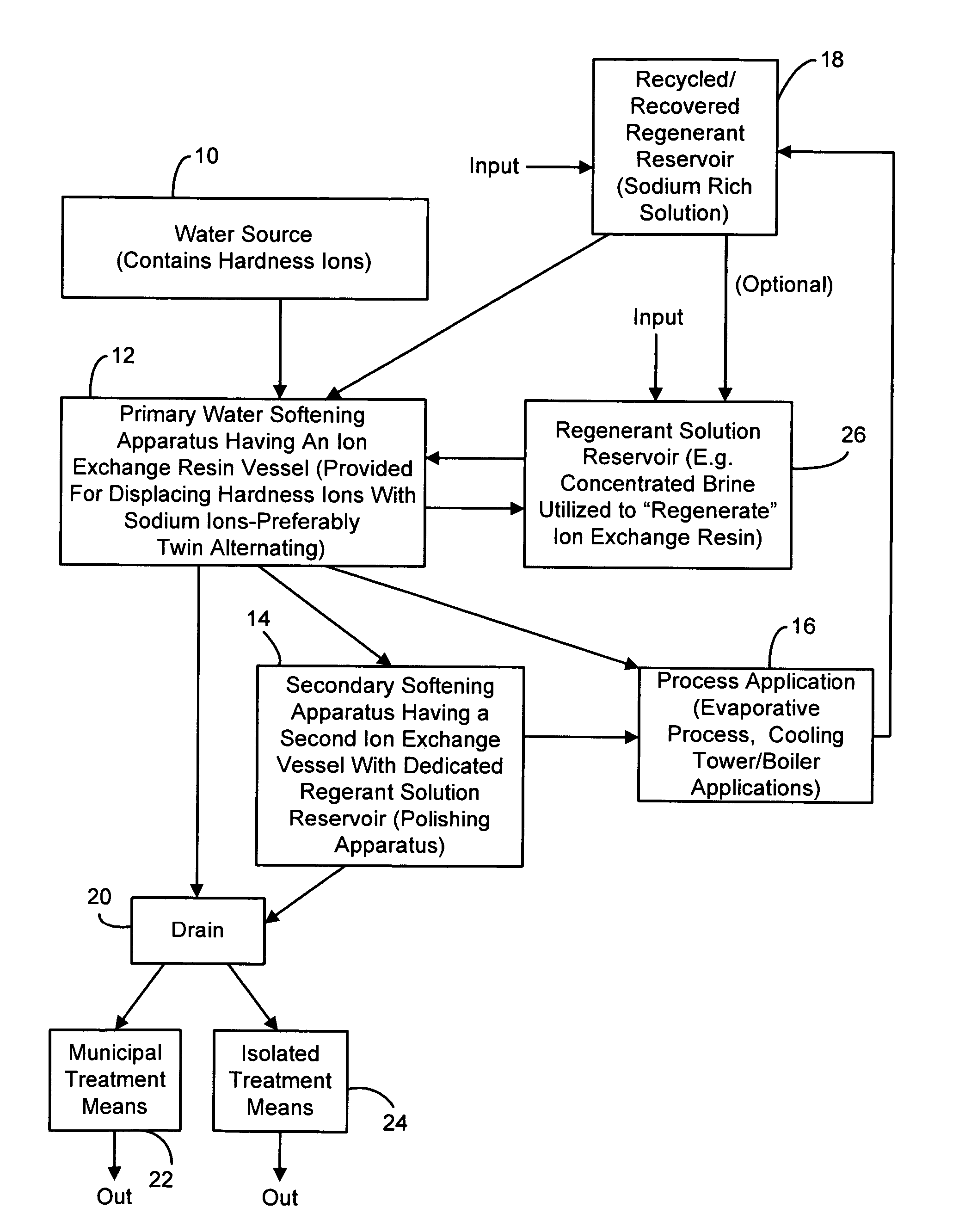Water softening method and system
a water softening method and water technology, applied in water/sewage treatment by ion exchange, chemistry apparatus and processes, ion exchangers, etc., can solve the problems of reducing the efficiency of heating systems, heating systems, heat transfer surface cooling systems and other apparatus, and presenting a considerable problem with hard water,
- Summary
- Abstract
- Description
- Claims
- Application Information
AI Technical Summary
Benefits of technology
Problems solved by technology
Method used
Image
Examples
Embodiment Construction
[0031] The detailed description set forth below is intended as a description of the presently preferred embodiment of the invention, and is not intended to represent the only form in which the present invention may be constructed or utilized. The description sets forth the functions and sequences of steps for constructing and operating the invention. It is to be understood, however, that the same or equivalent functions and sequences may be accomplished by different embodiments and that they are also intended to be encompassed within the scope of the invention.
[0032] The present invention is directed to systems and methods for softening water which limits or reduces the amount of waste sent to municipality or other water treatment systems, preferably to reduce or eliminate high dissolved solids-bearing waste to such treatment systems. In particular, the present invention utilizes ion exchange resins with very fast kinetics and further utilizes recovered / recycled regenerant solution...
PUM
| Property | Measurement | Unit |
|---|---|---|
| volume | aaaaa | aaaaa |
| bed volumes | aaaaa | aaaaa |
| charge | aaaaa | aaaaa |
Abstract
Description
Claims
Application Information
 Login to View More
Login to View More - R&D
- Intellectual Property
- Life Sciences
- Materials
- Tech Scout
- Unparalleled Data Quality
- Higher Quality Content
- 60% Fewer Hallucinations
Browse by: Latest US Patents, China's latest patents, Technical Efficacy Thesaurus, Application Domain, Technology Topic, Popular Technical Reports.
© 2025 PatSnap. All rights reserved.Legal|Privacy policy|Modern Slavery Act Transparency Statement|Sitemap|About US| Contact US: help@patsnap.com


